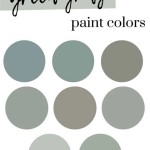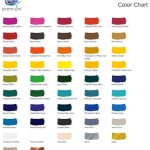Color World Painting: Exploring the Creative Art of Nature
Color World Painting is more than just applying pigments to a surface; it's an exploration of the creative artistry embedded within the natural world. It's about understanding how light interacts with objects, how colors shift and change with the seasons, and how natural forms can inspire and inform artistic creation. This approach to painting encourages a deep connection with the environment, fostering observation skills and promoting a unique perspective on the world around us.
The creative art of nature, as a concept within painting, emphasizes the inherent beauty and design principles found in flora, fauna, landscapes, and atmospheric phenomena. It encourages the artist to move beyond mere representation and delve into the underlying structures, patterns, and relationships that define the natural world. This involves studying the Fibonacci sequence in the arrangement of leaves, the Golden Ratio in the spirals of seashells, and the principles of color theory as they manifest in a sunset. By understanding these elements, the painter can translate the essence of nature onto the canvas, creating works that resonate with authenticity and depth.
This method isn't simply about creating realistic depictions. While realism can certainly be a part of it, the core focus lies in capturing the feeling, the mood, and the underlying energy of the natural world. It’s about conveying the experience of being present within a specific environment, whether it’s the quiet serenity of a forest, the vibrant energy of a coral reef, or the dramatic power of a storm. This requires more than just technical skill; it demands an emotional connection and a willingness to be open to the lessons that nature has to offer.
Understanding Light and Color in Nature
Light is the fundamental element that brings color to life. In the natural world, light is constantly changing, impacting the colors we perceive. Understanding these changes is critical for capturing the essence of nature in paint. The color of sunlight, for example, varies depending on the time of day and atmospheric conditions. At sunrise and sunset, the light is warmer, casting a golden or reddish hue over the landscape. During midday, the light is cooler and more direct, resulting in a more neutral color palette.
Furthermore, the interaction of light with different surfaces creates a wide range of colors and tones. A leaf, for instance, absorbs certain wavelengths of light and reflects others, resulting in its characteristic green color. The texture of the leaf also plays a role, affecting how light is scattered and reflected. A smooth, glossy leaf will reflect more light than a rough, matte leaf, resulting in a brighter, more saturated color. The artist must observe and understand these subtleties to accurately represent the colors of nature.
Color theory is also paramount. Understanding complementary colors, analogous colors, and different color schemes helps artists create harmony and balance in their paintings. For example, understanding that blue and orange are complementary colors can help an artist create a vibrant sunset scene, while using a analogous color scheme of greens and yellows can create a sense of tranquility in a forest painting. Color mixing is another critical skill allowing the artist to render the multitude of hues observed in nature. Mastering color mixing involves understanding the properties of different pigments and how they interact with each other.
Exploring Natural Forms and Patterns
Nature is replete with recurring forms and patterns, from the spiral arrangement of sunflower seeds to the branching patterns of trees. These patterns are not random; they often follow mathematical principles or serve a specific purpose within the ecosystem. By studying these forms and patterns, artists can gain a deeper understanding of the underlying structure of the natural world and incorporate them into their paintings.
The Fibonacci sequence, for example, is a mathematical sequence that appears frequently in nature. It can be seen in the arrangement of petals in a flower, the spirals of a pinecone, and the branching patterns of trees. Understanding this sequence can help artists create more visually appealing and harmonious compositions. The Golden Ratio, a mathematical ratio approximately equal to 1.618, is another principle that appears frequently in nature and art. It can be used to create visually pleasing proportions in compositions and to guide the placement of elements within a painting.
Beyond mathematical principles, artists must also consider the organic forms of nature. Trees, rocks, water, and clouds all have unique shapes and textures that must be carefully observed and rendered. Understanding the anatomy of trees, for example, can help an artist create more realistic and convincing depictions of forests. Studying the flow of water can help an artist capture the dynamism and energy of a river or waterfall. This requires diligent observation and a willingness to embrace the imperfections and irregularities that are inherent in the natural world.
Developing an Emotional Connection with Nature
Creating art inspired by nature is not merely about technical skill or intellectual understanding; it also requires an emotional connection. Spending time in nature, observing the environment with all senses, and allowing oneself to be moved by its beauty and power can profoundly impact an artist's work. This connection can manifest in many ways, from a deep appreciation for the delicate balance of ecosystems to a sense of awe at the vastness and complexity of the universe.
By developing a personal connection with nature, artists can imbue their paintings with a sense of authenticity and emotion. This can be achieved through plein air painting, which involves painting outdoors directly from observation. This allows the artist to experience the environment firsthand, capturing the light, color, and atmosphere in real-time. Alternatively, artists can cultivate their connection with nature through hiking, gardening, or simply spending time observing the natural world in their own backyard. The important thing is to find ways to engage with nature on a personal and emotional level.
Furthermore, artists can explore the symbolism and metaphors associated with different elements of nature. Trees, for example, often symbolize strength, resilience, and growth. Water can represent change, fluidity, and emotion. Mountains can symbolize challenges, aspirations, and spiritual enlightenment. By understanding these symbolic associations, artists can infuse their paintings with deeper meaning and create works that resonate with viewers on a subconscious level. This requires reflection and introspection, as well as a willingness to explore the personal significance of nature in one's own life.
In conclusion, the exploration of the creative art of nature through painting is a multi-faceted endeavor that involves technical skill, intellectual understanding, and emotional connection. By studying light, color, form, and pattern, and by cultivating a deep appreciation for the natural world, artists can create paintings that capture the essence of nature and inspire viewers to see the world in a new light.

Exploring The Natural World With Art Ackland Museum

Painting With Nature A Creative Sensory Delight For Kids

Timeless Beauty Exploring The World Of Famous Landscape Paintings Robert Lyn Nelson

Roberta March Exploring The Five Elements Of Nature Through Creative Reflection Visionary Art Collective

Nature In Art Detailed Discussion Of Inspired And Artists Is Fun

Bright Colors Painting Landscape The Creative Spot Digital Art Ai Landscapes Nature Natural Phenomena Weather Other Artpal

Nature In Art Detailed Discussion Of Inspired And Artists Is Fun

Roberta March Exploring The Five Elements Of Nature Through Creative Reflection Visionary Art Collective

Nature Art Activities For Toddlers Painting With Leaves Flowers And More

Bold Beautiful Nature Art Ideas For Kids Arty Crafty
Related Posts








